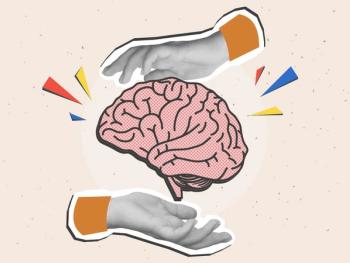
Seroconversion: From Unconscious to Conscious and Back
The journey of switching specialties from anesthesia to psychiatry, from OR to office.
[[{"type":"media","view_mode":"media_crop","fid":"14211","attributes":{"alt":"","class":"media-image media-image-right","id":"media_crop_3243194411421","media_crop_h":"0","media_crop_image_style":"-1","media_crop_instance":"717","media_crop_rotate":"0","media_crop_scale_h":"0","media_crop_scale_w":"0","media_crop_w":"0","media_crop_x":"0","media_crop_y":"0","style":"float: right; margin: 6px;","title":" ","typeof":"foaf:Image"}}]]Unlike many residents, my journey into medicine and psychiatry was a circuitous one. Born to a family of non-physicians, I reluctantly went into medicine because “I wanted to help people.” Without a strong sense of self, I was persuaded by my parents to be independent and to become my own boss. Challenged by my medical school interviewers as to why I did not pursue my other interest (education), my resolute answer that awarded me admission was, “I want to challenge myself.”
While my defiance of authority has tempered some, it remains alive and well. I believe it is one of the reasons I changed my medical specialty from anesthesia to psychiatry. The bright lights and the stage (operating room [OR]) became a Broadway play-predictable and uninspiring with each successive production (operation). The drone of the pulse oximeter, the rhythmic hum of the blood pressure cuff, the occasional chant of “anesthesia” from the surgeon is less and less glamorous, I reflected while emptying the Foley catheter. I started to wonder why each surgery was being performed more than I contemplated what I needed to do as the anesthesiologist. I would think, “I know what I am doing, but why is this procedure happening?” Aside from the obvious (trauma,
When I worked at the preoperative anesthesia (pain) clinic, I would asked the nurse practitioners and physician assistants the “why” questions. Why is this patient having surgery? Why is this elective procedure important enough for a person to endure the trauma of surgery? What will make a “nose job” worthwhile for this patient? The clinical experience was a time not to be jaded, but one to create meaning and purpose. Performing the
My rotation in the pain clinic left me energized and excited by the notion of being a support for a patient with a chronic condition that might never improve. I enjoyed sitting with those for whom there were few answers. On reflection, I discovered I liked not knowing-or in systems-centered therapy language, the edge of the unknown. Not knowing took the form of a question. In the OR, the question was, “How can I sustain this individual’s vital signs, oxygen saturation, and hemodynamics?” In the office, new questions arose, such as “Who am I?” “What makes me happy?” “Why do I do and say the things I do and say?” or “How do I derive meaning in life?” My mission became clear-that the human experience in an ever-changing environment is more complex and challenging than monitoring vital signs in a predictable OR. This shift in focus is what led me to change residencies.
Over the past 3 years, one of my developing interests has been to understand not only what a person thinks and feels, but just as importantly, how. This fascination has helped me as a resident, therapist, prescriber, and fellow human being to connect with patients in meaningful and rewarding ways.
Just the other day, I was sitting with a patient who had been in treatment at the
I remember thinking after my first couple of sessions, “What should I say. What could I say?” With the guidance of one of my mentors/supervisors, I began to learn what it truly meant to be present with someone; to create a supportive environment from which change may come; and to be able, as the provider, to sit with the may. I learned to explore with the patient the frailty of life and what from it, and to grieve what he may not get out of it.
Since our sessions ended, the patient continues to have medical setbacks. Despite these, his outlook for the future is brighter than it has been in years. He is no longer using his nasal cannula and walker. He takes pride in challenging himself physically and emotionally and is connecting more with loved ones and family.
As I continue to forge into the unknown, I have learned to be open to what may come from not knowing. For my patient, he has learned to not live his life in fear. I am humbled by the experience, yet I continue to feel excited about being at the edge of the unknown.
Disclosures:
Dr Nastasi is Clinical Assistant Professor in the department of psychiatry and Interventional Pain Medicine Fellow in the department of anesthesia at SUNY Upstate Medical University in Syracuse, NY.
Newsletter
Receive trusted psychiatric news, expert analysis, and clinical insights — subscribe today to support your practice and your patients.















